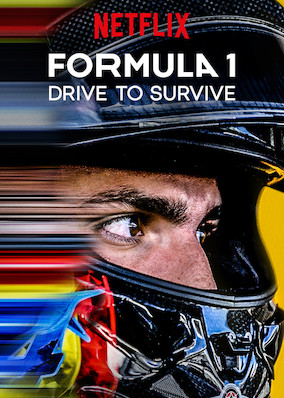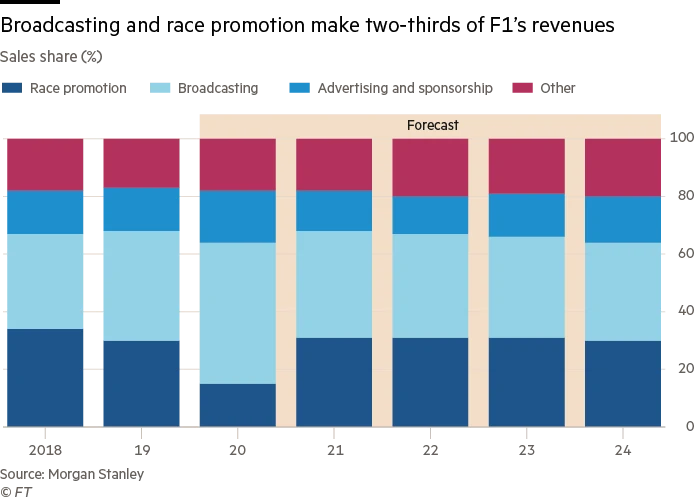The Revival of Formula-1
- Rohan Nidmarti
- Jul 27, 2021
- 5 min read
With the world at a standstill in the middle of a pandemic, Formula-1 increased its social media audience, beating well-established leagues like NBA, NFL, LaLiga, & UFC. The digital philosophy of F1 has started to pay-off. While other sports-leagues suffered a decline in viewership, F1 witnessed significant growth. To understand how F1 reached here, we need to go back a bit.


The Beginning of F1:
F1 officially began at Silverstone, UK in 1950, when the definition for the single-seat racing event was put in place. However, back then it was more of a racing festival than a business.
Beginning in the 1970s, Bernie Ecclestone rearranged the management of F1's commercial rights, and is credited with transforming the sport into the multibillion dollar industry it is today. He formed the Formula One Constructors' Association (FOCA). Previously, circuit owners controlled the income of the teams and negotiated with each. Ecclestone persuaded teams to hunt as a pack through the FOCA and offered Formula-1 to circuit owners as a package. In return for the package they were required to surrender trackside advertising rights.
During the early 1990s, Formula One Group created a number of trademarks, an official logo, a TV graphics package, and a website to give it a corporate identity. Ecclestone experimented with with a digital TV package (called Bernievision) in co-operation with German digital services company DF1.
In November 2005, private-equity firm CVC Capital acquired the Formula One Group from Bernie Ecclestone for $2.1 billion. They brought in the money and safety that tricked down to all levels of motor-racing. With cars hitting speeds of 370 kph, taking pit-stops in 2 seconds, and the sport having a turnover of $1.5 billion, F1 became the pinnacle of technology, glamour, prestige, & speed.
New Ownership:
By 2016, the sheen was fading. The 2010 & 2015 F1 global surveys revealed significant dissatisfactions in the fanbase. F1 had no direct relationships with fans, and third-party digital services were siphoning off fan attention.

F1 was mostly focused on securing media rights while ignoring digital, marketing, communications, fans, & research. It was ironic that the world's most technologically advanced sport was out-of-touch with the digital world.
It was time for a change, and Liberty Media Group acquired the Formula One Group for $8 billion in 2016. Liberty Media treated F1 as a media company rather than a sports company.
Under Liberty's ownership, Chase Carey became the CEO of Formula One. Chase had been in the media business for 30 years as COO of Fox, Inc., CEO of DirectTV, COO of News Corporation, and Vice-Chairman of 21st Century Fox.
Data First:
Liberty Media leveraged the large amount of data that F1 holds to increase fan engagement. This data is not just present in the form of video, but also in the form of data points - An F1 car pushes 1.1 million data points per second through 300 sensors.
Earlier, this data was used by teams to make cars better and improve driving dynamics, however, it could also be used by fans to understand the race better. Using this treasure trove of data, F1 brought better content to fans.

F1 partnered with Amazon Web Services (world's largest cloud computing company) to use data to create a better fan experience, analyse race strategy, compare competitors, and interpret car/driver performance.

This large amount of data also creates new avenues for F1. It could team up with Sony/Microsoft to allow users to race with their Playstation/Xbox in real-time while a race is going on.
Social-Media/Digital:
Unlike previous decades, where the sport was followed by hardcore automotive enthusiasts & intellectuals, F1 has expanded beyond its core audience and connects with Gen-Y and Gen-Z.
F1 is banking on young drivers adept at E-Sports, social-media, & Twitch. Digitally-savvy racers such as Charles Leclerc, Lando Norris, George Russell, & Alex Albon attract new fans to the sport. During the pandemic, F1 launched an E-Sports series called the Virtual Grand Prix. The pro-drivers streamed their gaming exploits live on Twitch. The virtual races are part of F1's broader efforts to lure in a new generation of fans.

According to analysts, F1 audience between the ages of 16-35 will grow to 1 billion by 2022. F1 also has its official YouTube channel with 6 million subscribers and posts videos where drivers try out new challenges, give a sneak-peek into their daily lives etc. Add to this a mix of F1 podcasts, F1 apps, F1TV, an OTT-platform, and fans can tune into F1 content, whenever, wherever, and how they want.
The Netflix documentary series, 'Drive To Survive' which gives viewers behind-the-scenes access to all 10 F1 teams also helped the sport connect to a younger audience.

How Does F1 Make Money?
1) Broadcasting Fees: F1's biggest revenue stream comes from the sale of television rights, which in the US alone was worth $4 billion a season. It attracts the largest global TV audience after the FIFA, & Olympics.
2) Race-Sanctioning Fees: This is the fees for hosting a F1 race. F1 makes almost $800 million from race-sanctioning fees, and host cities don't mind paying since it boosts tourism, increases the global prestige of the country, and costs lesser than the Olympics or other such games. F1 launched the 'New Locations Initiative' with the aim to produce races from countries that haven't been involved with the sport such as South Korea, Azerbaijan, India, Saudi Arabia, Vietnam, & Russia.
3) Advertising & Sponsorships: F1 generated revenues by selling trackside advertising & race sponsorships to companies. Off-late, companies such as Zoom, Cisco are demanding data from F1, and don't care much about the branding.
4) Ticket-Sales: F1 host countries have to pay a percentage of ticket sales to the Formula One Group.

Future:
In the last few years, F1 has come a long way, especially with its marketing strategy. The sport has increased TV & digital viewership and added a significant number of fans. 25% of fans are between the ages of 16-24. The sport now has a turnover of $4.5 billion, and employs 50,000 people in 30 different countries.
F1 teams signed the Concorde Agreement a few years back with the aim of bridging the gap between the larger and smaller teams. This was done to curb the financial advantage that teams such as Mercedes & Ferrari have over Sauber, Haas etc. Teams will be restricted to spend $145 million in 2021. The agreement will also change how prize money and TV revenue is distributed.
F1 has launched to plan to become carbon-neutral by 2030. Most F1 cars now use a hybrid power unit, and F1 has also developed a fuel with 100% sustainability. All events will also become sustainable by eliminating single-use plastics, and ensuring all waste is recycled, reused or composted.
Current issues have now become part of the F1 discussion: Lewis Hamilton's stand on racial injustice after the George Floyd murder, 'We Stand As One' initiative to acknowledge the global fight against COVID.

Conclusion:
Liberty Media understood that in F1 they have the best technology, the best engineers, and the only thing missing was the connection with fans. By embracing new platforms - OTT, social-media, data analytics - F1 is now poised to convert newcomers to the sport to long-term fans and generate unprecedented interest levels.



Comments